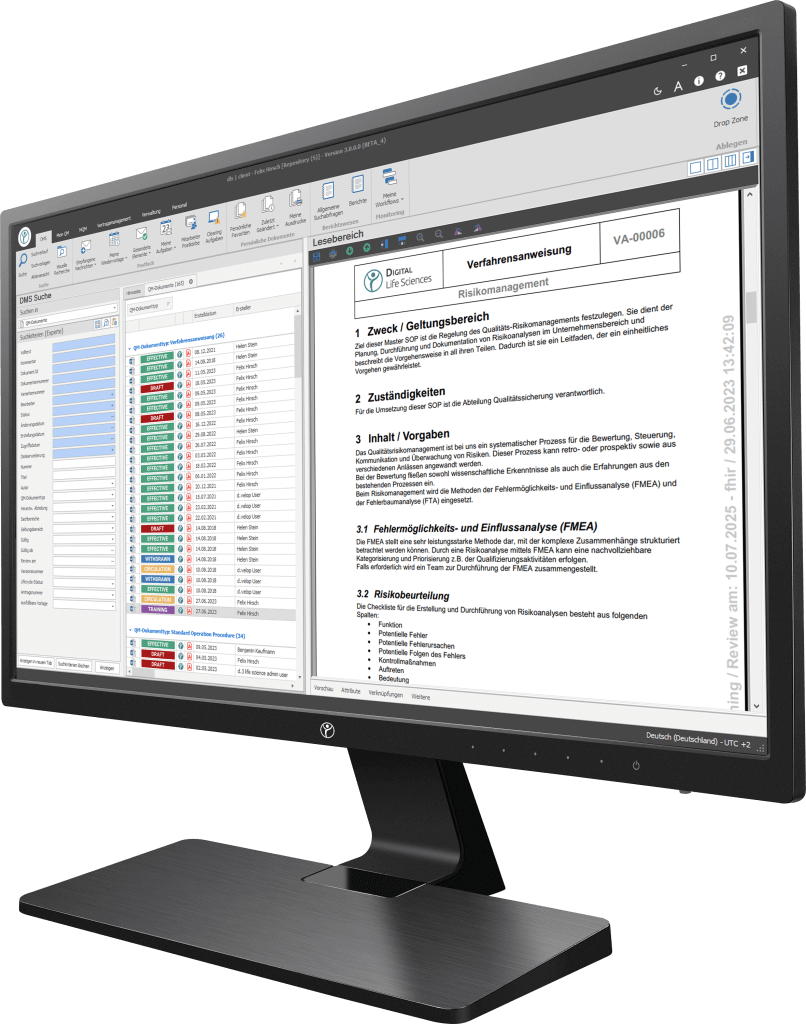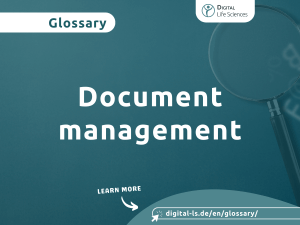Definition of the term (“What is the Ordinance for the Manufacture of Medicinal Products and Active Pharmaceutical Ingredients?”)
The Ordinance on the Production of Medicinal Products and Active Pharmaceutical Ingredients is an ordinance on the application of good manufacturing practice in the production of medicinal products and active ingredients and on the application of professional practice in the production of products of human origin. It was issued by the Federal Ministries of Health and Food, Agriculture and Consumer Protection in agreement with the Federal Ministers of Economics, Technology and the Environment and with the consent of the German Federal Council.
Why is Section 2, §10 of the Ordinance for the Manufacture of Medicinal Products and Active Pharmaceutical Ingredients significant?
Section 2, §10 is a specific portion of the Ordinance for the Manufacture of Medicinal Products and Active Pharmaceutical Ingredients dealing with quality assurance of medicinal products. It specifies that companies and organisations must maintain a documentation system corresponding to the activities performed in each case. Documentation shall be made clear, accurate and up to date. If records are kept with electronic data processing systems, the system shall be sufficiently validated. It is an underlying requirement to ensure that the information is available during the retention period and can be provided in legible form in a reasonable amount of time. The data must be protected against loss or damage during the entire retention period. The records shall be organised in such a way that the immediate recall of a product can be facilitated. In relation to the software, the supplier must therefore ensure that it is available at all times and that the documentation is always accessible .
What are the requirements for quality assurance?
Under Section 2, §10 of the Ordinance for the Manufacture of Medicinal Products and Active Pharmaceutical Ingredients, manufacturers are required to establish a comprehensive quality management system. This includes the monitoring and control of all manufacturing processes as well as the documentation of procedures and results.
Why are inspections and audits important?
An important component of §10 is the regular inspections and audits peformed by the competent authorities. These are intended to ensure that manufacturers comply with the requirements of the regulation on an ongoing basis.
Your path to digitisation - Discover our software
Our digitisation solutions primarily address document-based processes in manufacturing, production and quality management. The basis of the dls | eQMS is a holistic ECM/DMS system. The ECM/DMS system can be connected to your existing ERP system (e.g. SAP) and thus map almost all document-based processes in the company.

The significance of compliance
Compliance with Section 2, §10 of the Ordinance for the Manufacture of Medicinal Products and Active Pharmaceutical Ingredients is crucial for manufacturers of medicinal products. Failure to comply with these regulations can have serious legal consequences.
- Risks of non-compliance: If manufacturers do not comply with the requirements of §10, their products may be classified as unsafe or ineffective. This can lead to recalls, liability claims and reputational damage.
- Compliance Benefits: Strict compliance with §10, to the contrary, can contribute to ensure the quality as well as safety of medicinal products. This increases consumer confidence and promotes the success of manufacturers.
Challenges and developments in Section 2, §10 of the Ordinance for the Manufacture of Medicinal Products and Active Pharmaceutical Ingredients
Section 2, §10 of the Ordinance for the Manufacture of Medicinal Products and Active Pharmaceutical Ingredients is not set in stone and is subject to change and update to meet changing requirements.
- Current developments: In recent years, there have been several important developments with regard to §10, including the introduction of new technologies for quality assurance and harmonization with international standards.
- Future outlook: The future of Section 2, §10 will likely evolve to reflect advances in drug manufacturing. This requires continuous adaptation and training of manufacturers.
What does §20 of the Ordinance for the Manufacture of Medicinal Products and Active Pharmaceutical Ingredients require?
Section 20 “Storage of documentation” requires that all documents can only be stored in rooms suitable and permitted by the Ordinance for the Manufacture of Medicinal Products and Active Pharmaceutical Ingredients. The room typically has to be located on the company’s premises. The Ordinance for the Manufacture of Medicinal Products and Active Pharmaceutical Ingredients refers to the EU GMP Guideline for further details of the requirements contained therein.
Conclusion
The Ordinance for the Manufacture of Medicinal Products and Active Pharmaceutical Ingredients, in particular Section 2, §10, plays a key role in the quality assurance of medicinal products in Germany. Compliance with these regulations is of paramount significance in ensuring the safety and effectiveness of medicinal products.
Start your digital transformation with our high-performance, modular software solutions
Frequently Asked Questions (FAQs)
Which companies must comply with Section 2, §10 of the Ordinance for the Manufacture of Medicinal Products and Active Pharmaceutical Ingredients?
All companies that manufacture medicinal products or active ingredients must comply with the provisions of §10 of the Ordinance for the Manufacture of Medicinal Products and Active Pharmaceutical Ingredients.
Are there sanctions for non-compliance with §10?
Yes, legal sanctions such as fines and product recalls can be imposed for non-compliance with §10 of the Ordinance for the Manufacture of Medicinal Products and Active Pharmaceutical Ingredients.
How can manufacturers ensure that they comply with §10 of the Ordinance for the Manufacture of Medicinal Products and Active Pharmaceutical Ingredients?
Manufacturers can ensure compliance with §10 by implementing a comprehensive quality management system and conducting regular inspections and audits.
What is the role of inspections and audits in relation to §10?
Inspections and audits are critical to ensuring that manufacturers comply with the requirements of §10 and maintain the quality of their products.
Where can I find further information on §10 of the Ordinance for the Manufacture of Medicinal Products and Active Pharmaceutical Ingredients?
For more information on §10 of the Ordinance for the Manufacture of Medicinal Products and Active Pharmaceutical Ingredients and other relevant regulations, please visit the website of the competent health authority.

